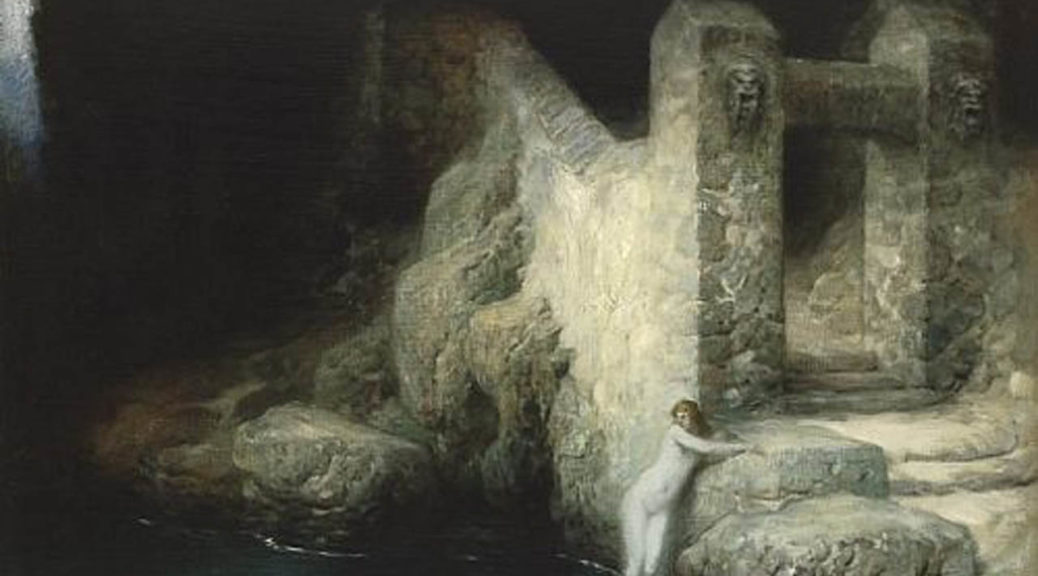
Tag Archives: paintings

Carl Blechen
Carl Blechen

Bau der Teufelsbrücke. Building the Devil’s Bridge. 1833. Via Wikimedia.
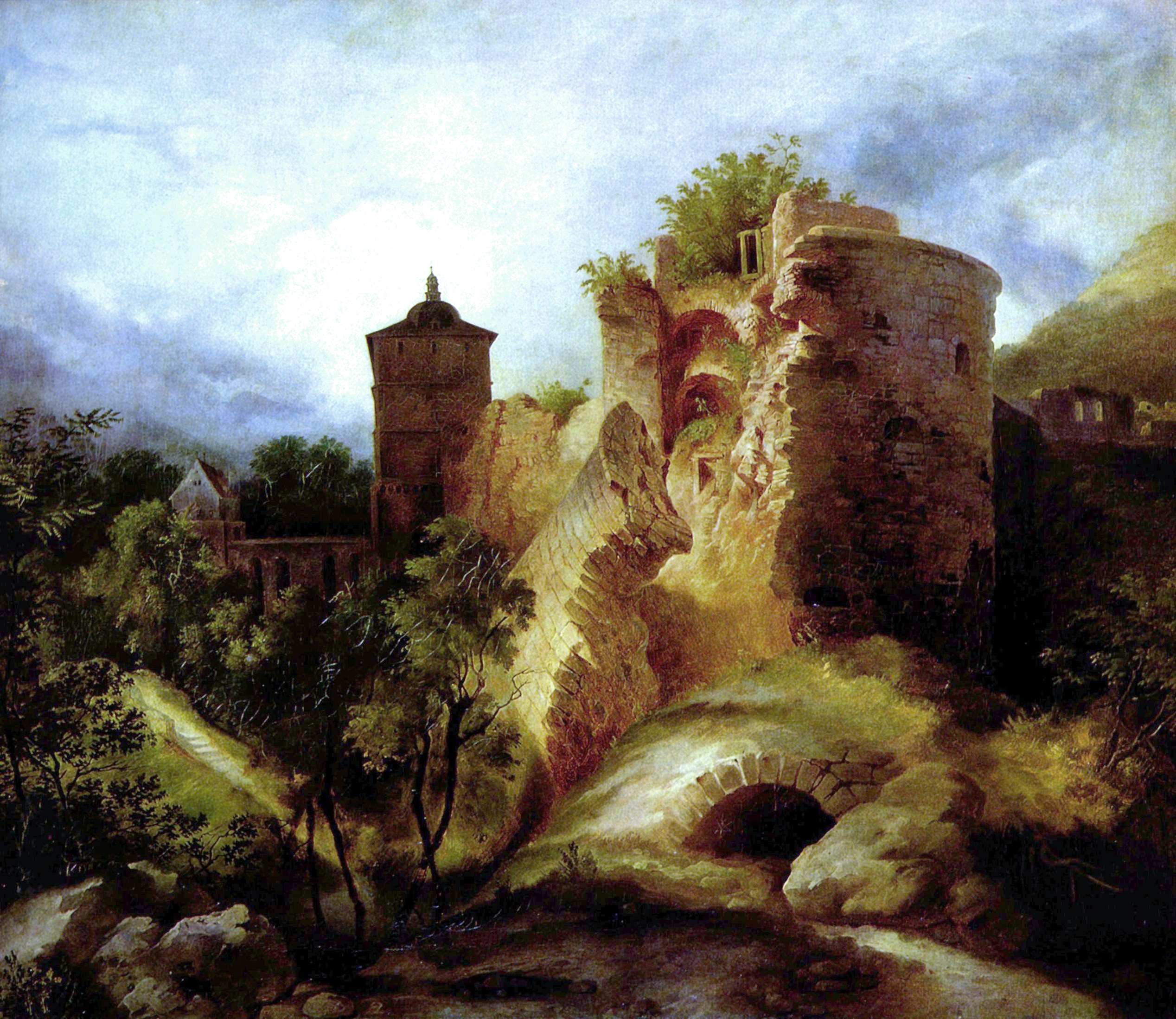
Der gesprengte Turm des Heidelberger Schlosses. The Ruined Tower of Heidelberg Castle, c. 1830. Via Wikimedia.

Waldweg bei Spandau. Forest path at Spandau. 1835. Via Wikimedia.
Approaching a City | Edward Hopper
On Edward Hopper by Mark Strand from The New York Review of Books | Article
“something that is not there at the outset but reveals itself slowly, and then completely, having traveled an arduous route during which vision and image come together,”
“By the time the gas station appears on canvas in its final form it has ceased being just a gas station. It has become Hopperized. It possesses something it never had before Hopper saw it as a possible subject for his painting. And for the artist, the painting exists, in part, as a mode of encountering himself.”
“With the uncertainty under which the painter labors, extended periods of doubt, it is a wonder that he can ever be free of anxiety or finish a work. Even the prodigiously talented Picasso needed constant reassurance. ¶ One of the ways Hopper dealt with his lack of certainty was to make many preparatory drawings for each painting;”
“It was not that he needed to be sure how to paint a sugar dispenser of salt shaker as in Nighthawks (1942), but that they should become his. ¶ This absorption of the outer world into his inner world could only be accomplished through a protracted ritual of drawing and redrawing, slight adjustments here and there adding up to imaginative ownership and psychic freedom.”
“Again and again, words like “loneliness” or “alienation” are used to describe the emotional character of his paintings.”
“It was thrilling to suddenly go underground, travel in the dark, and be delivered to the masses of people milling about in the cavernous terminal.”
Read: Mark W. Turner essay comparing “the wall in Melville’s Bartleby the Scrivener and Hopper’s walls.
See:
New York Movie (1939) (at MoMa)
Nighthawks (1942) [at Art Institute of Chicago]
Approaching a City (1946) [Phillips Collection, Washington, D.C.]
Morning Sun (1952) [Columbus Museum of Art, Georgia]
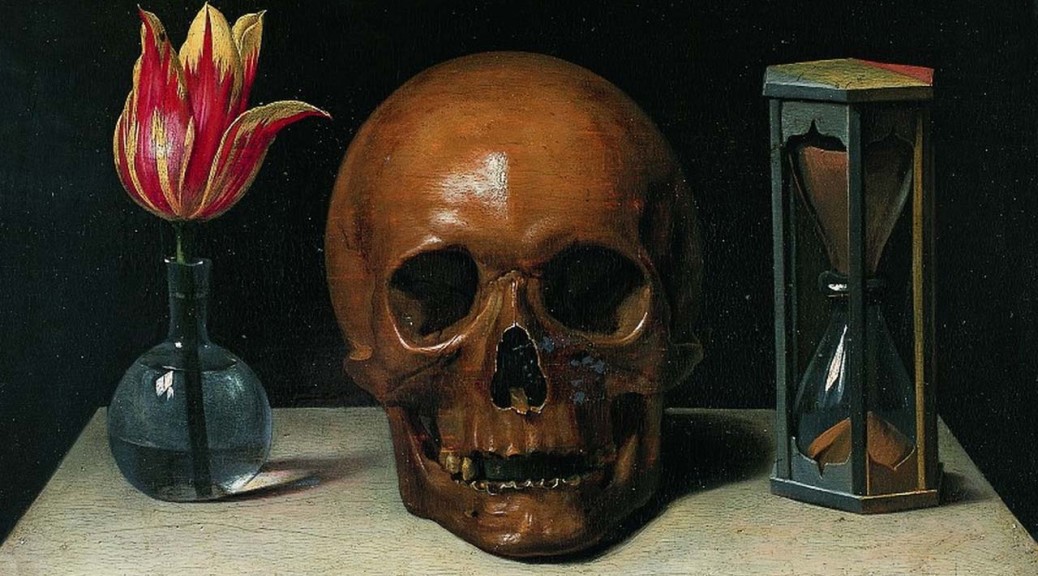
Et in Arcadia Ego

Et in Arcadia Ego. Guercino. 1618-22. Galleria Nazionale d’Arte Antica, Rome. Via wikimedia.
A memento mori at 3:38.

Nicholas Poussin, Et in Arcadia Ego, 1627. via wikipedia.
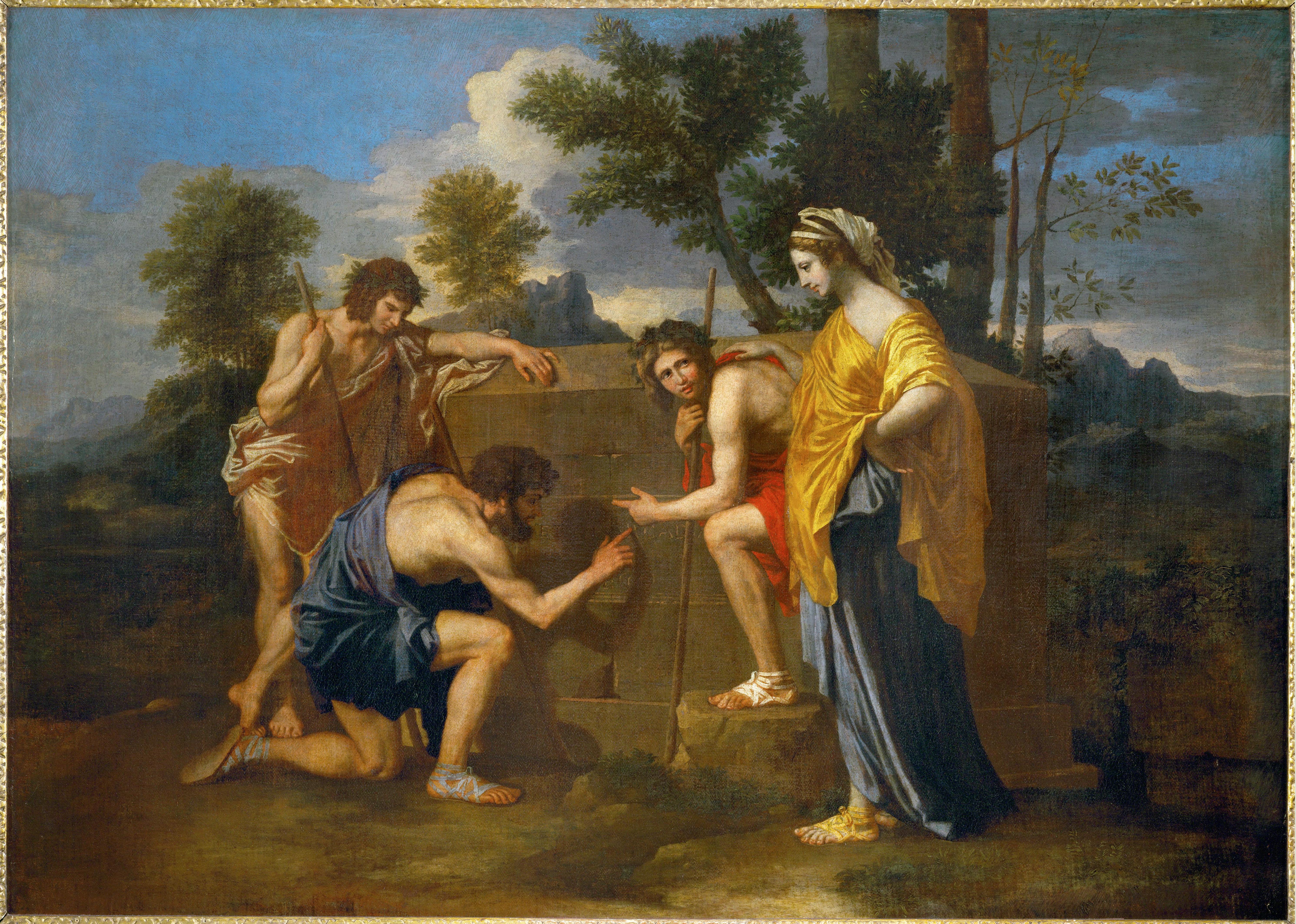
Nicolas Poussin. Et in Arcadia ego (1637-1638). Via wikimedia.
Interpretation of the phrase and paintings:
“The most important difference between the two versions is that in the latter version, one of the two shepherds recognizes the shadow of his companion on the tomb and circumscribes the silhouette with his finger. According to an ancient tradition (see Pliny the Elder, nat. Hist. XXXV 5, 15), this is the moment in which the art of painting is first discovered. Thus, the shepherd’s shadow is the first image in art history. But the shadow on the tomb is also a symbol of death (in the first version symbolized by a skull on the top of the tomb). The meaning of this highly intricate composition seems to be that, from prehistory onward, the discovery of art has been the creative response of humankind to the shocking discovery of mortality. Thus, death’s claim to rule even Arcadia is challenged by art […] In the face of death, art’s duty—indeed, her raison d’être—is to recall absent loved ones, console anxieties, evoke and reconcile conflicting emotions, surmount isolation, and facilitate the expression of the unutterable.” * Wikipedia.
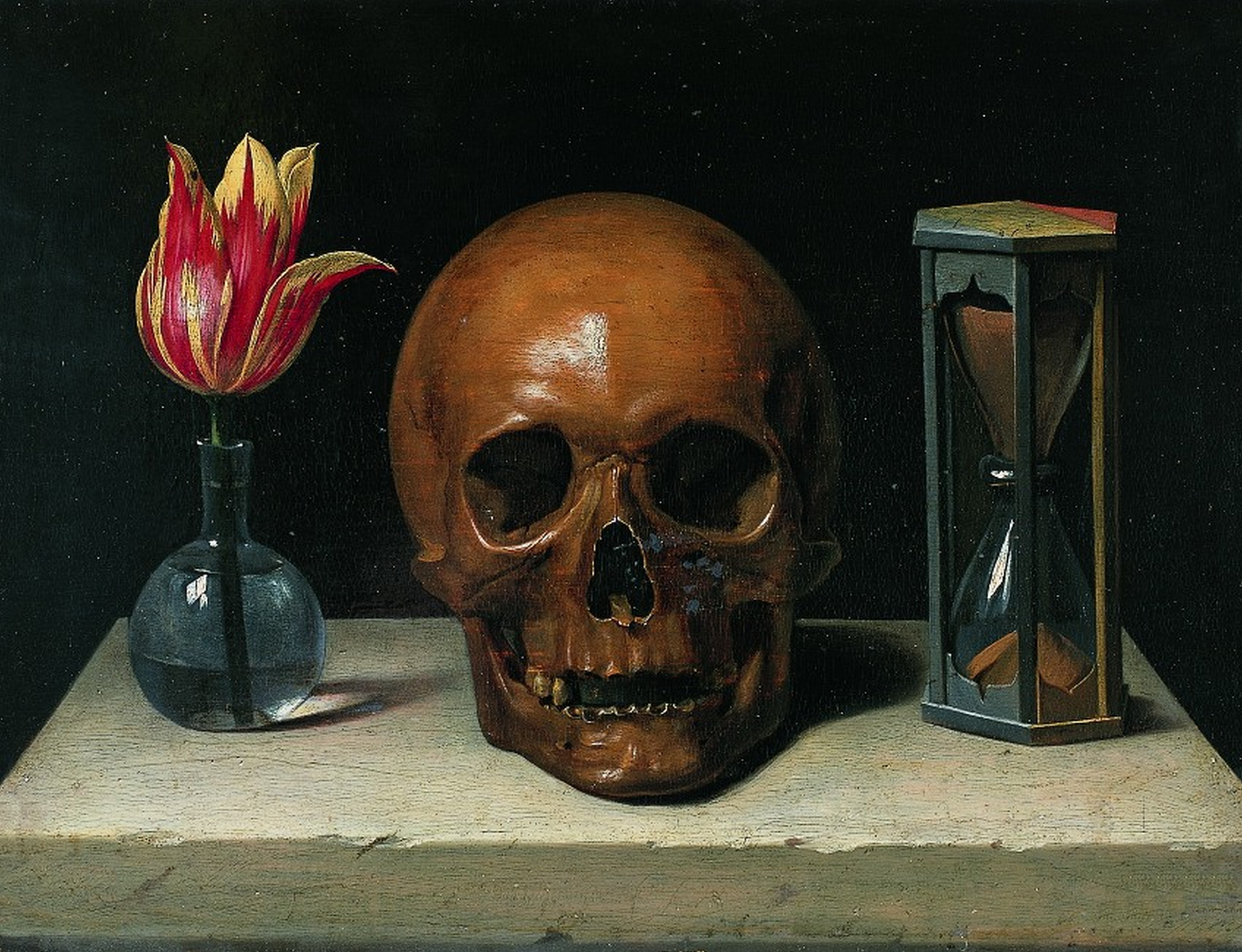
Philippe de Champaigne. Vanitas (c. 1671) Life, Death, and Time.
See memento mori and vanitas.
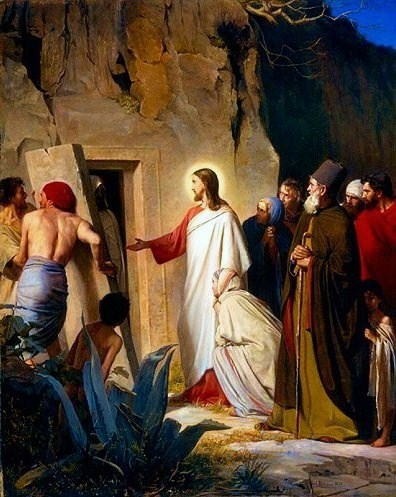
Raising Lazarus, Oil on Copper Plate, 1875, Carl Heinrich Bloch. Via wikimedia.
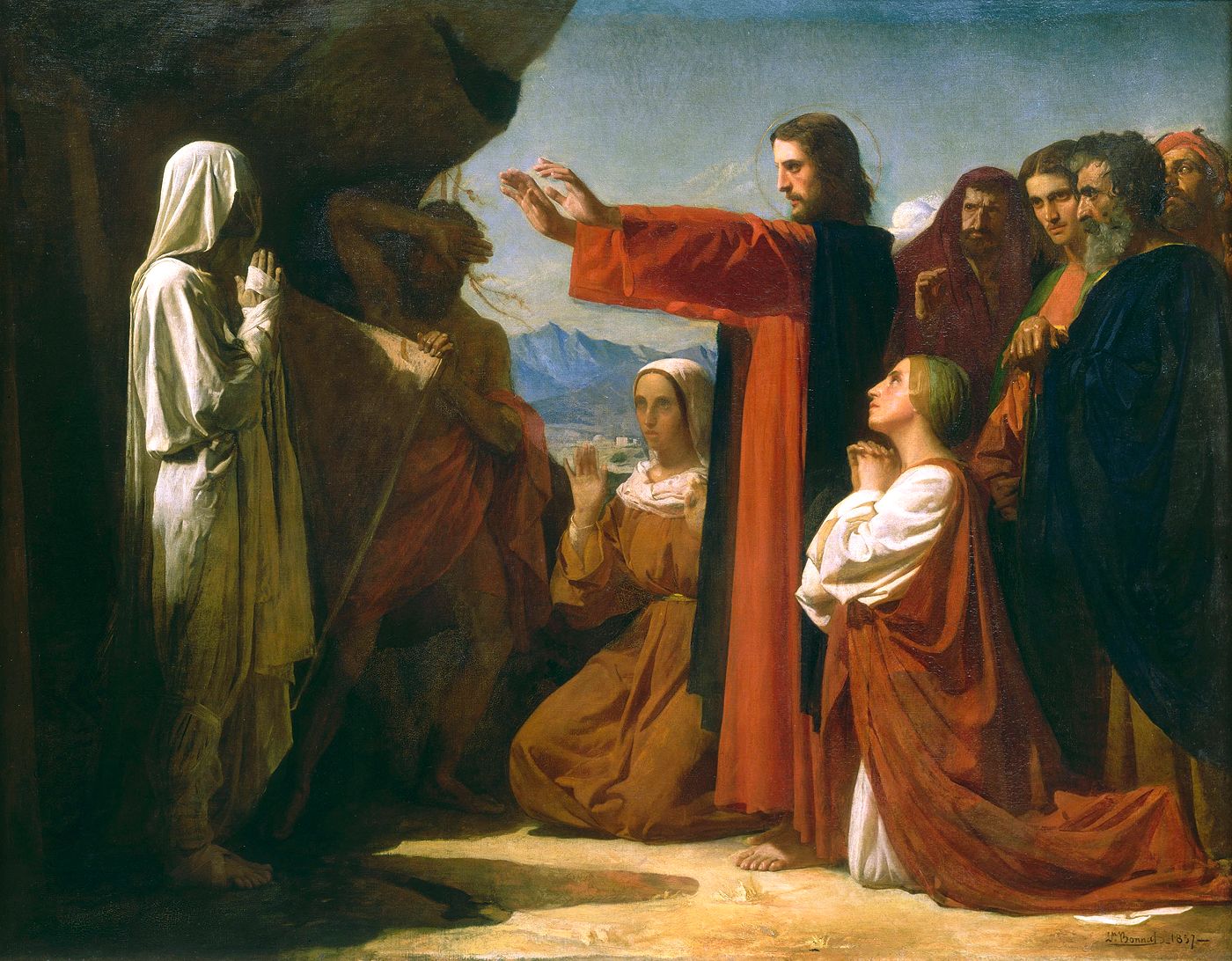
The Raising of Lazarus, 1857, Léon Joseph Florentin Bonnat. Via wikimedia.
See Ecologues of Virgil.
See Erwin Panofsky
See Web Gallery of Art.
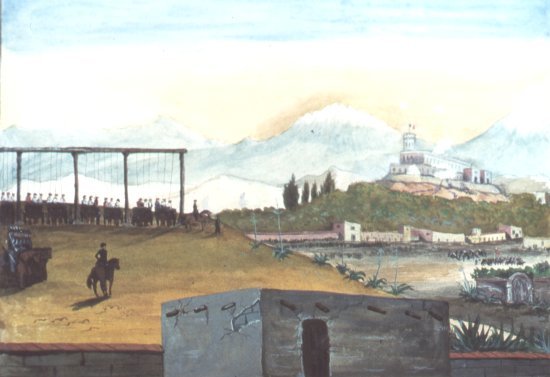
The mass hanging of San Patricios via wikimedia.
Read Samuel Chamberlain‘s My Confession: Recollections of a Rogue.
—–
Et In Arcadia Ego is the name the Judge has given to his rifle in Blood Meridian. In the book, the Judge copies and destroys an ancient rock painting he finds while crossing the desert.
——
On the origin of painting and drawing through shadow. Blog.
——
*the source of the interpretation doesn’t appear in Wikipedia unless it comes from the German book Picasso und die christliche Ikonographie. Mutterbeziehung und künstliches Selbstverständnis (2003) by . (Picasso and the Christian iconography. Mother relationship and artificial self-image).

the witches of goya
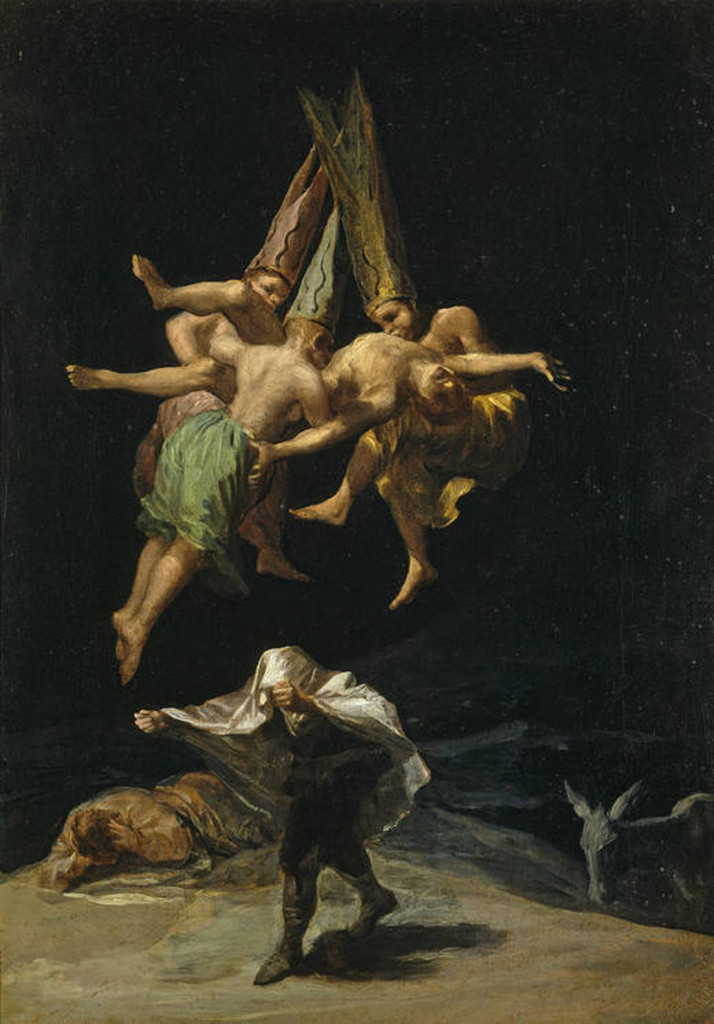 Francisco Goya. Vuelo de Brujas. Witches Flight, 1797-98 (wikimedia).
Francisco Goya. Vuelo de Brujas. Witches Flight, 1797-98 (wikimedia).  Witches’ Sabbath (The Great He-Goat), 1821-1823 (wikimedia).
Witches’ Sabbath (The Great He-Goat), 1821-1823 (wikimedia).
 El Aquelarre, 1797-98. (wikimedia).
El Aquelarre, 1797-98. (wikimedia).
see Pinturas Negras
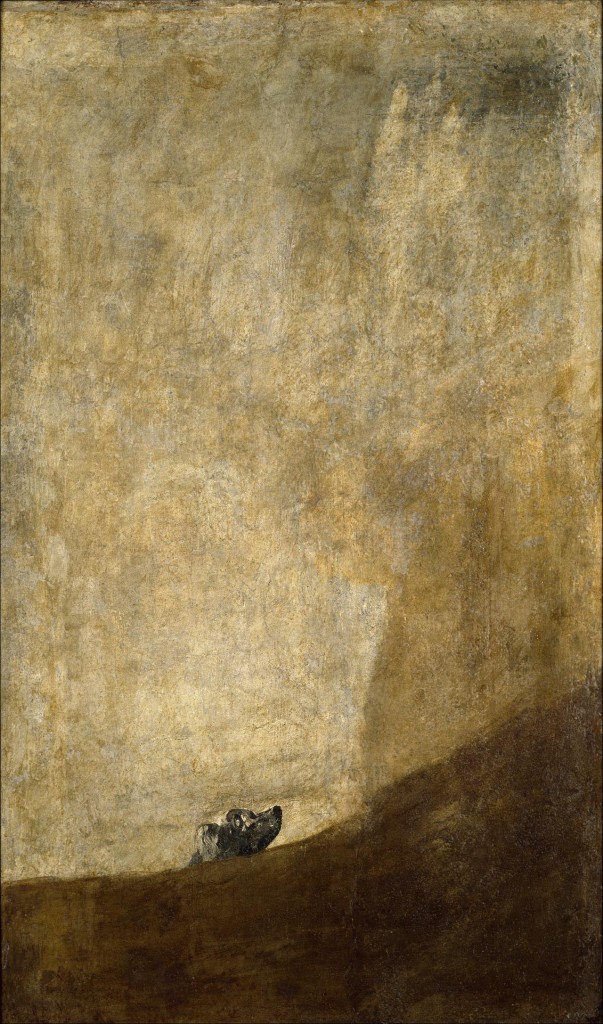 El Perro, circa 1819–1823 (wikimedia).
El Perro, circa 1819–1823 (wikimedia).
